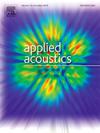Objective and subjective acoustic assessment of music halls with passive variable systems: a case of Bilkent Music Hall
IF 3.4
2区 物理与天体物理
Q1 ACOUSTICS
引用次数: 0
Abstract
In concert halls, the need for variable acoustics arises from the diverse requirements of different musical performances. Previous research suggests that incorporating passive variable acoustic solutions can help venues adapt to various musical needs. This research explores the challenges and potentials of passive variable techniques in symphonic music halls, focusing on Bilkent Music Hall in Ankara − the main venue for Bilkent Symphony Orchestra (BSO) and an early example of variable acoustic systems in Türkiye. Acoustical field measurements were conducted within the hall to test different configurations of passive variable system. Later, subjective data is gathered through questionnaires and online surveys conducted with BSO members, faculty and students from the Bilkent Music Conservatory. Excessive low-frequency absorption is identified as a major acoustical problem of the hall. Thus, the final step involves acoustical simulations to evaluate a proposed design intervention aimed at improving acoustical comfort for different music performances. The hall’s existing variable acoustic system is investigated across a variety of musical performances, including chamber music, orchestral music, orchestral music with choir and vocal accompaniment, solo recitals, and occasional speech-oriented activities. This analysis provides valuable insights into musicians’ acoustical experiences and preferences regarding the music hall. The objective and subjective findings are then compared with precedent cases from around the world with variable acoustics systems.
被动变量系统音乐厅的客观与主观声学评价:以比尔肯特音乐厅为例
在音乐厅里,不同的音乐表演需要不同的音响效果。先前的研究表明,采用被动可变声学解决方案可以帮助场地适应各种音乐需求。本研究探讨了被动可变技术在交响音乐厅中的挑战和潜力,重点关注安卡拉的比尔肯特音乐厅——比尔肯特交响乐团(BSO)的主会场,也是土耳其 rkiye可变声学系统的早期例子。在大厅内进行了声场测量,以测试不同配置的被动变量系统。随后,通过问卷调查和在线调查收集主观数据,调查对象包括BSO成员、比尔肯特音乐学院的教师和学生。过度的低频吸收被认为是大厅的主要声学问题。因此,最后一步涉及声学模拟,以评估旨在改善不同音乐表演的声学舒适性的拟议设计干预。大厅现有的可变声学系统在各种音乐表演中进行了研究,包括室内乐、管弦乐、管弦乐与合唱团和声乐伴奏、独奏会和偶尔的演讲活动。这种分析为音乐家的听觉体验和音乐厅偏好提供了有价值的见解。然后将客观和主观的发现与世界各地不同声学系统的先例进行比较。
本文章由计算机程序翻译,如有差异,请以英文原文为准。
求助全文
约1分钟内获得全文
求助全文
来源期刊

Applied Acoustics
物理-声学
CiteScore
7.40
自引率
11.80%
发文量
618
审稿时长
7.5 months
期刊介绍:
Since its launch in 1968, Applied Acoustics has been publishing high quality research papers providing state-of-the-art coverage of research findings for engineers and scientists involved in applications of acoustics in the widest sense.
Applied Acoustics looks not only at recent developments in the understanding of acoustics but also at ways of exploiting that understanding. The Journal aims to encourage the exchange of practical experience through publication and in so doing creates a fund of technological information that can be used for solving related problems. The presentation of information in graphical or tabular form is especially encouraged. If a report of a mathematical development is a necessary part of a paper it is important to ensure that it is there only as an integral part of a practical solution to a problem and is supported by data. Applied Acoustics encourages the exchange of practical experience in the following ways: • Complete Papers • Short Technical Notes • Review Articles; and thereby provides a wealth of technological information that can be used to solve related problems.
Manuscripts that address all fields of applications of acoustics ranging from medicine and NDT to the environment and buildings are welcome.
 求助内容:
求助内容: 应助结果提醒方式:
应助结果提醒方式:


